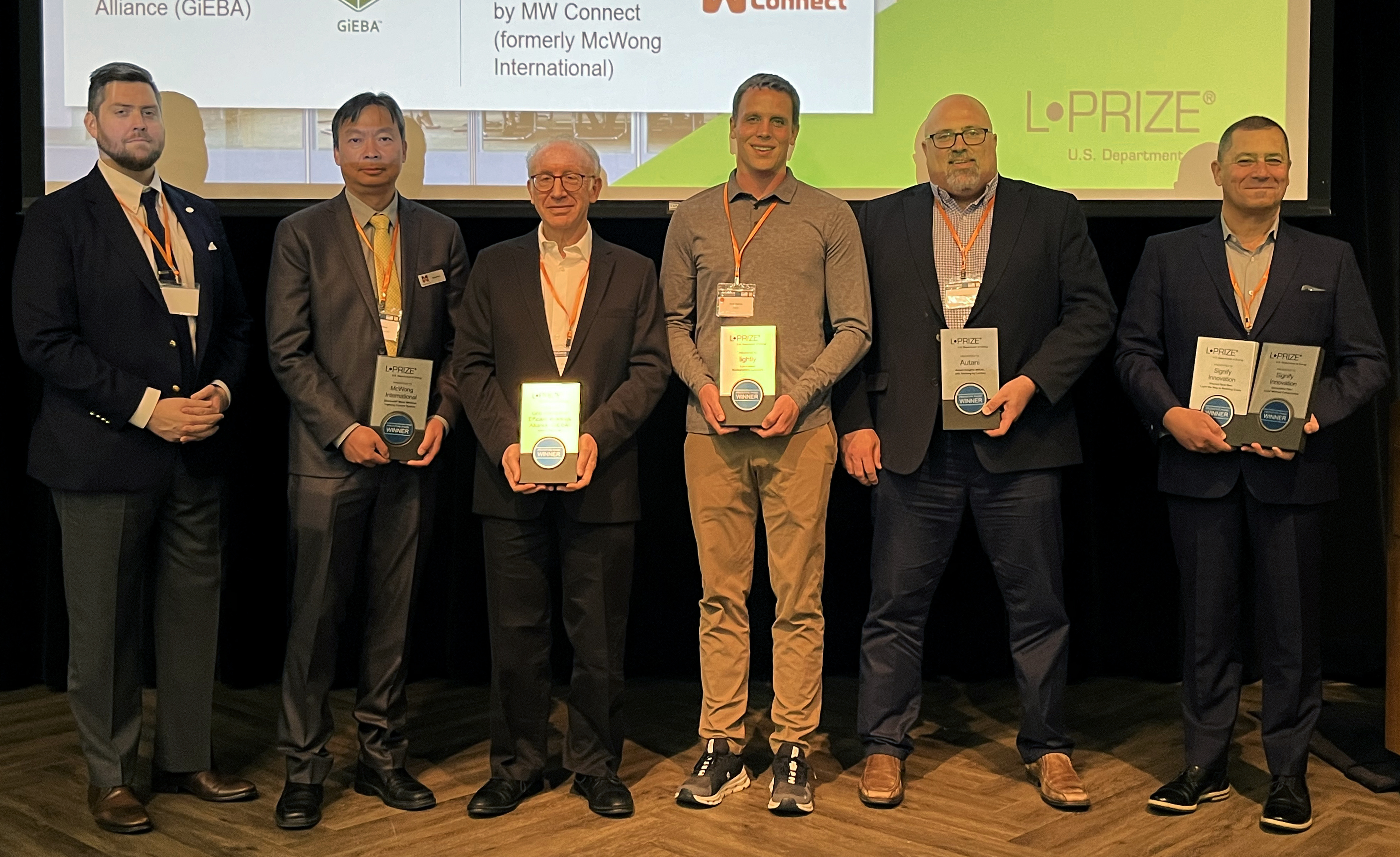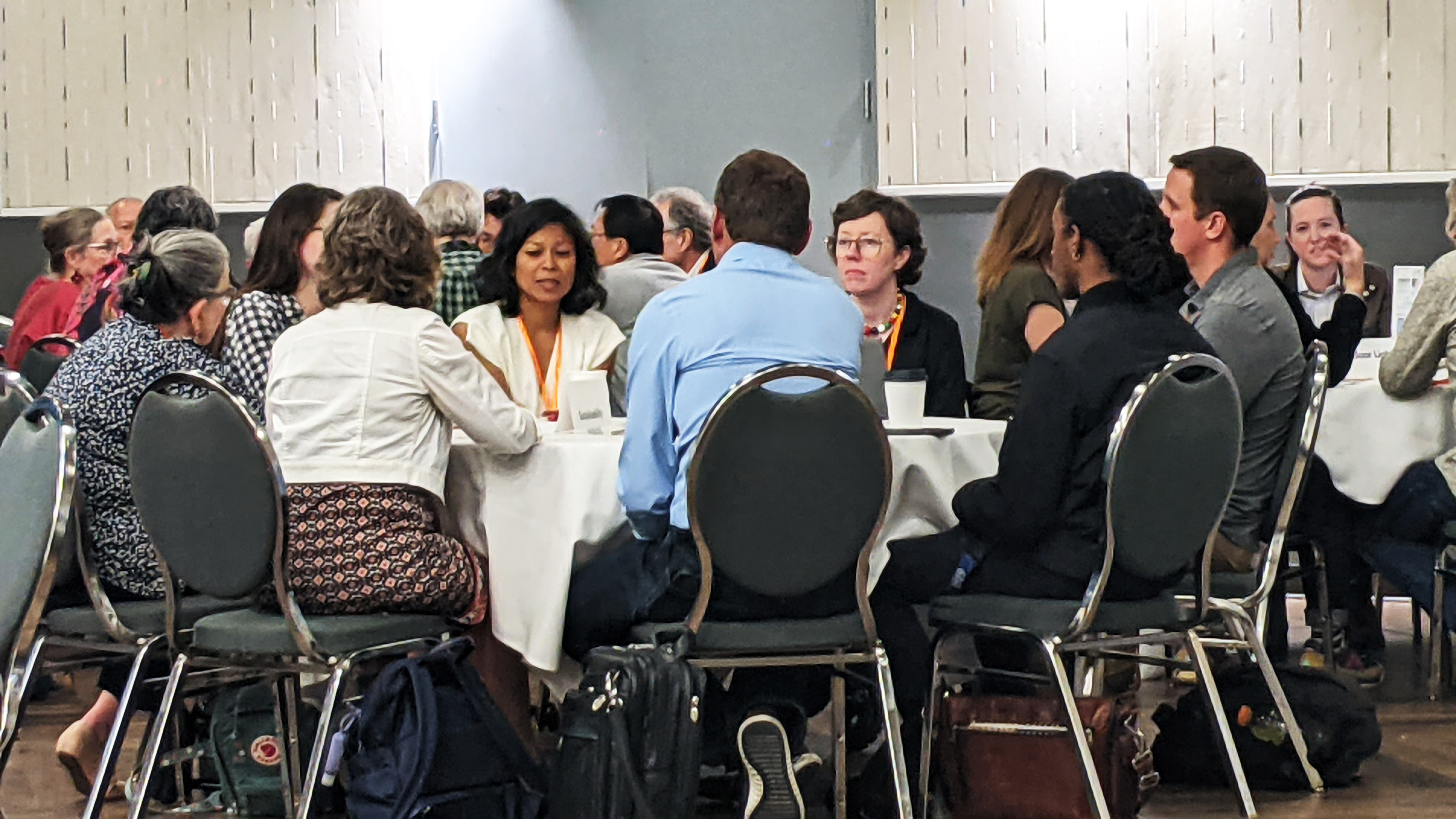Every other year, internationally recognized experts in lighting meet to share their latest breakthroughs and explore the most profound lighting challenges now facing researchers and industry. They ask and answer questions like:
- How can we manage light to maximize its benefits on human health?
- How can we reduce the negative impacts of lighting products and make them more sustainable?
- In what ways can we spur innovation in lighting systems to maximize energy savings in these climate-challenged times?
- What role will AI play in the future of lighting design and implementation?
 Experts took on these issues, and many others, at the biennial lighting Research Symposium co-sponsored by the Illuminating Engineering Society (IES) and the U.S. Department of Energy (DOE), held last month (May 15 and 16) at the Oregon Museum of Science & Industry (OMSI). The event featured panel discussions, topic tables, a networking reception, and a tour of Pacific Northwest National Laboratory’s Lighting Science & Technology Lab.
Experts took on these issues, and many others, at the biennial lighting Research Symposium co-sponsored by the Illuminating Engineering Society (IES) and the U.S. Department of Energy (DOE), held last month (May 15 and 16) at the Oregon Museum of Science & Industry (OMSI). The event featured panel discussions, topic tables, a networking reception, and a tour of Pacific Northwest National Laboratory’s Lighting Science & Technology Lab.
The stakes for this gathering are high, as convening all these top minds in one place for frank and informative dialogues is incredibly important to both DOE and IES—helping to establish the research and policy priorities of both organizations, with ripples affecting the entire lighting world.
Day One
The kickoff session explored the many facets of the environmental impacts of lighting. The topics included the need to manufacture lighting products that meet sustainability and circularity targets; and the ecological impacts of light at night along with the importance of directional lighting and light distribution to mitigate light trespass. A follow-on session explored the latest thinking on design for resiliency in lighting in the face of adverse conditions, including what this might mean for communications using wireless networked lighting controls.
 Day one also featured a session on the DOE L-Prize for lighting innovations in buildings, which included a recap of the competition goals and technical requirements developed to overcome historical tradeoffs that have existed in LED product and system design. The session recognized the Prototype Phase winners and the important innovations in their entries. The winners took part in a panel discussion where they shared the challenges and tradeoffs they encountered, along with insights about what research would help address these challenges and move their breakthroughs into the marketplace. The audience and panelists honed in on the challenges of connected lighting systems; the Prototype Phase brought forward significant innovations in connected system interoperability, digital control, and grid service capabilities. These innovations prompted enhancements to the rules for the final Manufacturing & Installation Phase, where L-Prize innovations will become commercially available products.
Day one also featured a session on the DOE L-Prize for lighting innovations in buildings, which included a recap of the competition goals and technical requirements developed to overcome historical tradeoffs that have existed in LED product and system design. The session recognized the Prototype Phase winners and the important innovations in their entries. The winners took part in a panel discussion where they shared the challenges and tradeoffs they encountered, along with insights about what research would help address these challenges and move their breakthroughs into the marketplace. The audience and panelists honed in on the challenges of connected lighting systems; the Prototype Phase brought forward significant innovations in connected system interoperability, digital control, and grid service capabilities. These innovations prompted enhancements to the rules for the final Manufacturing & Installation Phase, where L-Prize innovations will become commercially available products.
Day one ended with topic tables, where the experts huddled up in small groups to share perspectives and make their views known to DOE and IES on the outstanding challenges facing lighting R&D: light & human health, light trespass and the outdoor nighttime environment, the current generation of lighting controls, benefits and uses of daylighting, and more.
Day Two

In the day two kickoff panel session, leading experts described new research that expands our understanding of the impact of light on wellbeing, and the development of lighting application guidance based on these findings. The session also covered new research and understanding on the relationship between light conditions and the growing global prevalence of myopia, and the opportunity to develop lighting practices to minimize its onset and progression.
Other day two panels looked at the intersection of lighting and technology. A discussion of new technologies for lighting design and evaluation covered the specification and use of new D4i power supplies, the potential influence of AI on lighting, and new software to analyze illuminance levels and characterize delivered spectral power distribution. A follow-on session highlighted novel methods for evaluating occupant light exposure and how these methods can deepen understanding of the relationship between lighting conditions in real-world applications and current outcomes.
The optional tour of PNNL’s lighting lab, which closed out the gathering, dove deep into DOE research into the most profound issues in lighting. At one station, an installation of Type B TLEDs evaluated the photometric performance of available products and, more importantly, looked at flicker characteristics. Flicker waveforms were measured and various types of flicker demonstrated. Another station involved measuring the effectiveness of automatic lighting systems to detect faults and respond to signals from the electric grid. Yet another station demonstrated the PNNL spectrally tunable lighting facility and showed the results from a recent experiment examining the intersection of spatial brightness perception and color rendition. The tour provided a fascinating glimpse into the influence—and remaining mysteries—of lighting and proved a perfect way to close this year’s Research Symposium.
SAVE THE DATE
The next IES event is the Annual Conference, August 15–17 in New York City, where DOE will announce the 2024 Integrated Lighting Campaign Recognized Partners.